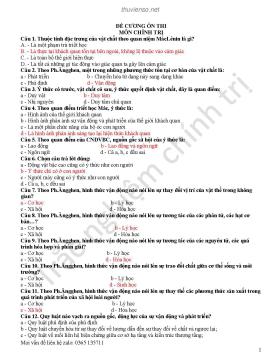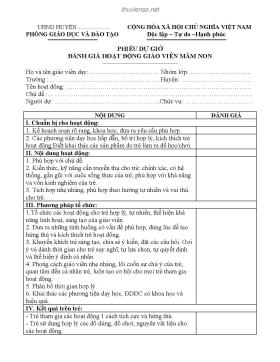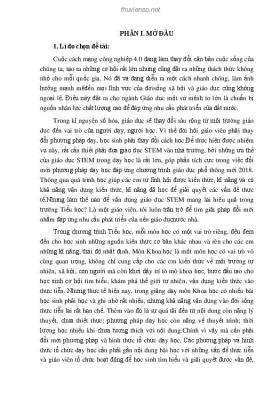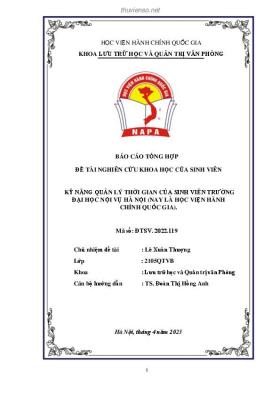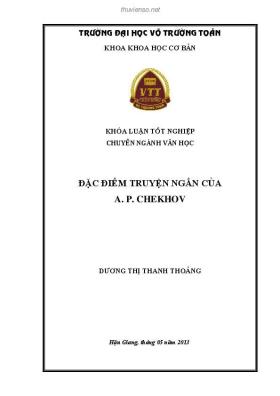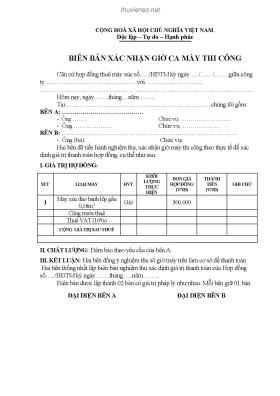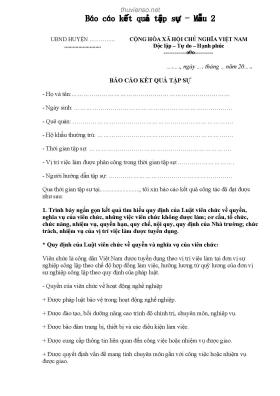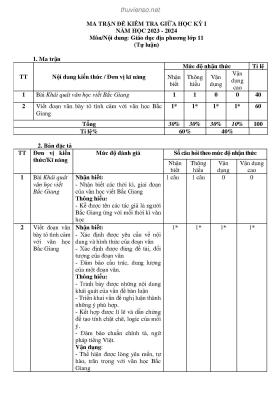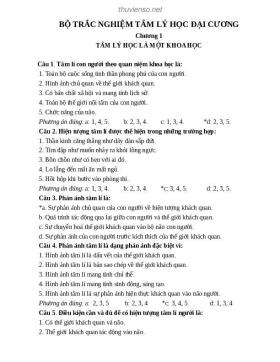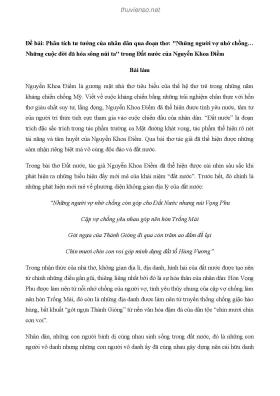
Using Variables
Thông tin tài liệu:
Nội dung trích xuất từ tài liệu:
Using Variables Using VariablesA variable is a storage location that holds a value. You can think of a variable as a boxholding temporary information. You must give each variable in a program a uniquename. You use a variables name to refer to the value it holds. For example, if you wantto store the value of the cost of an item in a store, you might create a variable simplycalled cost, and store the items cost in this variable. Later on, if you refer to the costvariable, the value retrieved will be the items cost that you put there earlier.Naming VariablesYou should adopt a naming convention for variables that help you avoid confusionconcerning the variables you have defined. The following list contains some generalrecommendations: • Dont use underscores. • Dont create identifiers that differ only by case. For example, do not create one variable named myVariable and another named MyVariable for use at the same time, because it is too easy to get them confused. NOTE Using identifiers that differ only by case can limit the ability to reuse classes in applications developed using other languages that are not case sensitive, such as Visual Basic. • Start the name with a lowercase letter. • In a multiword identifier, start the second and each subsequent word with an uppercase letter. (This is called camelCase notation.) • Dont use Hungarian notation. (Microsoft Visual C++ developers reading this book are probably familiar with Hungarian notation. If you dont know what Hungarian notation is, dont worry about it!) IMPORTANT You should treat the first two recommendations as compulsory because they relate to Common Language Specification (CLS) compliance. If you want to write programs that can interoperate with other languages, such as Microsoft Visual Basic .NET, you need to comply with these recommendations.For example, score, footballTeam, _score, and FootballTeam are all valid variable names,but only the first two are recommended.Declaring VariablesRemember that variables are like boxes in memory that can hold a value. C# has manydifferent types of values that it can store and process—integers, floating-point numbers,and strings of characters, to name three. When you declare a variable, you must specifywhat type of data it will hold.NOTEMicrosoft Visual Basic programmers should note that C# does not allow implicitdeclarations. You must explicitly declare all variables before you can use them if youwant your code to compile.You declare the type and name of a variable in a declaration statement. For example, thefollowing statement declares that the variable named age holds int (integer) values. Asalways, the statement must be terminated with a semi-colon.int age;The variable type int is the name of one of the primitive C# types—integer which is awhole number. (Youll learn about several primitive data types later in this chapter.) Afteryouve declared your variable, you can assign it a value. The following statement assignsage the value 42. Again, youll see that the semicolon is required.age = 42;The equal sign (=) is the assignment operator, which assigns the value on its right to thevariable on its left. After this assignment, the age variable can be used in your code torefer to the value it holds. The next statement writes the value of the age variable, 42, tothe console:Console.WriteLine(age);TIPIf you leave the mouse pointer over a variable in the Visual Studio 2005 Code and TextEditor window, a ToolTip appears telling you the type of the variable.
Tài liệu có liên quan:
-
Giáo trình Lập trình hướng đối tượng: Phần 2
154 trang 313 0 0 -
Kỹ thuật lập trình trên Visual Basic 2005
148 trang 306 0 0 -
Bài thuyết trình Ngôn ngữ lập trình: Hệ điều hành Window Mobile
30 trang 292 0 0 -
NGÂN HÀNG CÂU HỎI TRẮC NGHIỆM THIẾT KẾ WEB
8 trang 246 0 0 -
Bài giảng Một số hướng nghiên cứu và ứng dụng - Lê Thanh Hương
13 trang 245 0 0 -
Giáo trình Lập trình cơ bản với C++: Phần 1
77 trang 241 0 0 -
Giáo án Tin học lớp 11 (Trọn bộ cả năm)
125 trang 230 1 0 -
Bài tập lập trình Windows dùng C# - Bài thực hành
13 trang 204 0 0 -
Thiết kế mạch logic bằng Verilog - HDL
45 trang 193 0 0 -
Bài giảng Nhập môn về lập trình - Chương 1: Giới thiệu về máy tính và lập trình
30 trang 188 0 0 -
Giáo trình Lập trình C căn bản: Phần 1
64 trang 174 0 0 -
Báo cáo thực tập: Quản lý nhân sự & tiền lương
52 trang 160 0 0 -
Giáo trình nhập môn lập trình - Phần 22
48 trang 143 0 0 -
Giáo trình Lập trình C căn bản - HanoiAptech Computer Education Center
136 trang 141 0 0 -
LUẬN VĂN: ỨNG DỤNG NGÔN NGỮ LẬP TRÌNH RÀNG BUỘC COMET VÀO BÀI TOÁN LẬP THỜI KHÓA BIỂU
43 trang 141 0 0 -
161 trang 139 1 0
-
Giáo trình lập trình hướng đối tượng - Lê Thị Mỹ Hạnh ĐH Đà Nẵng
165 trang 128 0 0 -
Bài giảng Phương pháp lập trình: Chương 9 - GV. Từ Thị Xuân Hiền
36 trang 119 0 0 -
Giáo trình Ngôn ngữ lập trình 2
50 trang 114 0 0 -
Giáo trình Nhập môn lập trình VB6: Phần 2
184 trang 110 0 0


